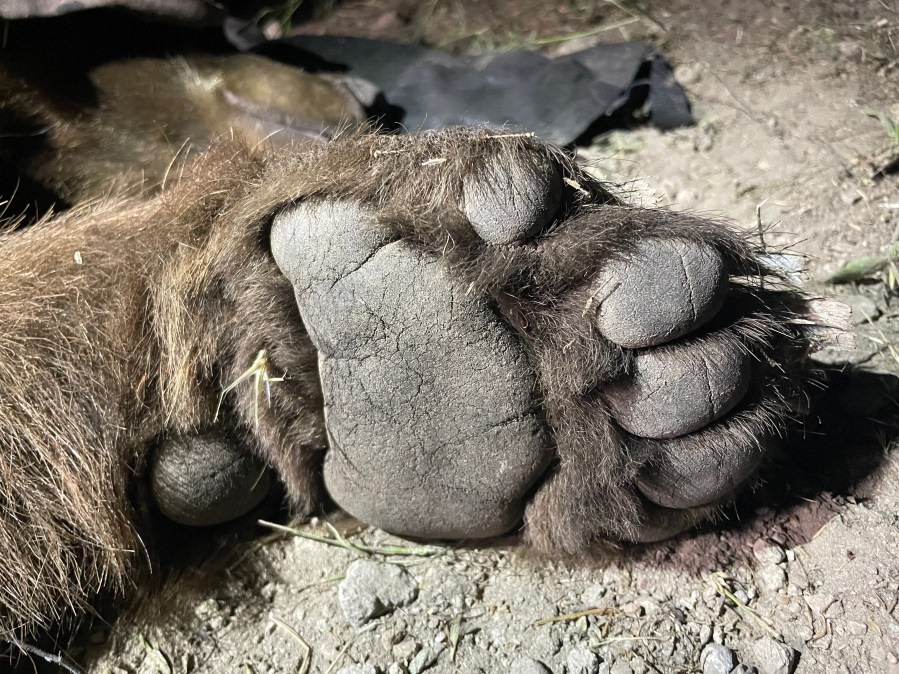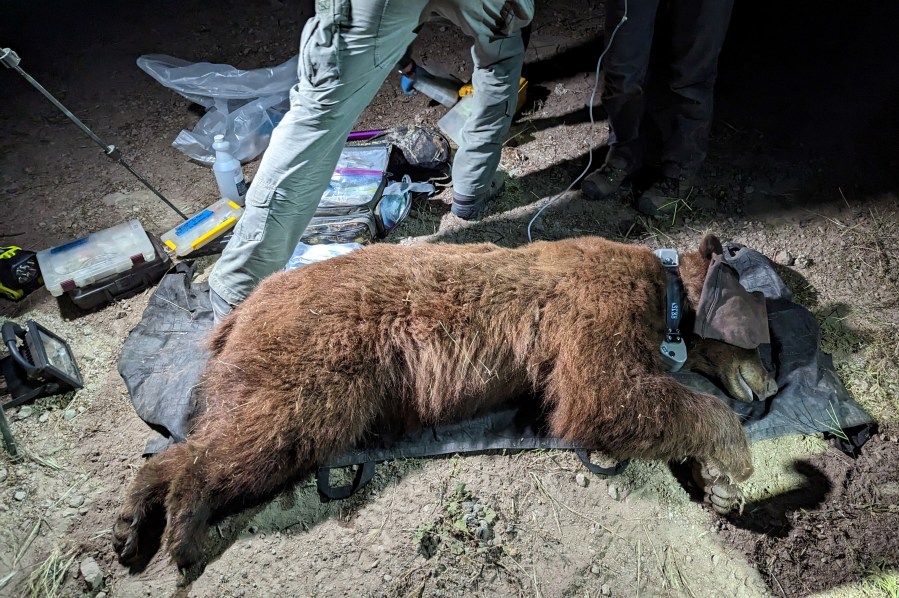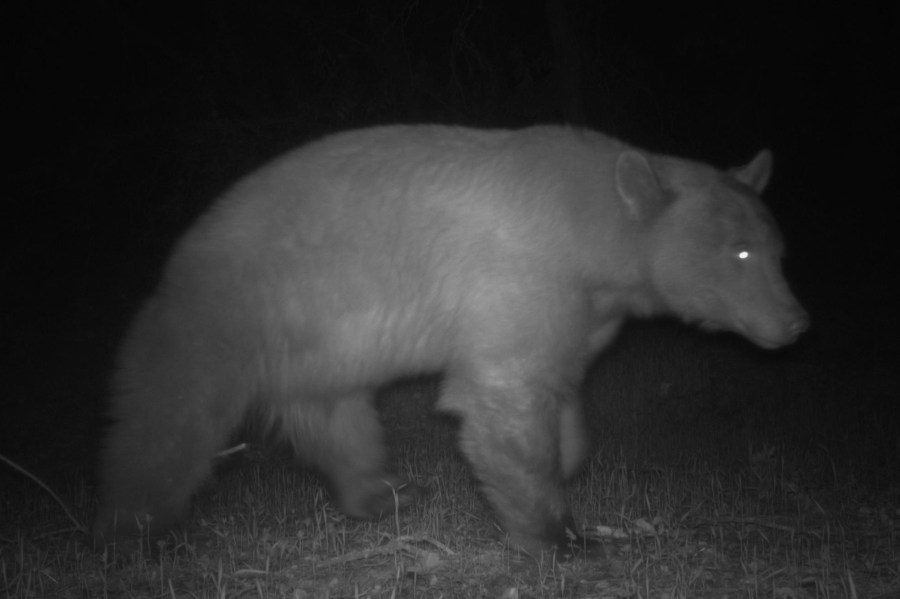Biologists from the National Park Service are tracking an adult black bear that is believed to be the only bear living in the Santa Monica Mountains.
The three or four-year-old black bear, dubbed BB-12, was captured on April 23 in the western portion of the Santa Monica Mountains, just south of the 101 Freeway.
Biologists performed a physical exam, took samples and measurements, and attached both an ear tag and a radio collar before releasing it.
The National Park Service said it’s the first time they’ve ever captured and collared a bear in this area and BB-12 is possibly the only bear living in the Santa Monica Mountains National Recreation Area.
“He’s likely been here for almost two years based on our remote camera data,” said Jeff Sikich, who has been the lead field biologist in charge of the park’s long-running mountain lion study. “This seems to be our first resident bear in the 20 years we have conducted mountain lion research in the area. It will be interesting to see how he shares the landscape with our other resident large carnivores.”
There have been bear sightings in the area throughout the years, NPS said, but BB-12 appears to be the first bear to call the region home. In July 2021, images of a young black bear were captured in Newbury Park and trail cameras have spotted a bear from Malibu State Park to Point Mugu — biologists say those images might just be of BB-12.
On occasion, black bears have been spotted in Simi Hills south of the 118 Freeway and even in the Santa Monicas south of the 101, but there’s no evidence of a viable breeding population in either area. The nearest breeding population, NPS says, is in the Santa Susana Mountains north of the 118 Freeway. That means this bear more than likely crossed a freeway or two to get to his current stomping ground.
Sikich says that the bear might attempt to move back north and cross the freeway again once he gets older and starts looking for a mate.
“With the radio-collar, we can track its movements and hopefully know where it may attempt to cross the freeway. This can help us better understand habitat connectivity for wildlife in the area,” Sikich said in a release.
Bears are omnivores and can live between 15 and 25 years, eating whatever is available to them, including fruits, nuts and insects, in addition to small animals and deer. They’ll often search out human food from cars, garbage cans and campsites and they’ll even consume dead animals that they find.
Although black bears can be found throughout much of the state, they aren’t actual native to Southern California. Thirty of them were brought to the region in the 1930s from Yosemite National Park. Previously, grizzly bears roamed the entire state before they were hunted to extinction. The state’s iconic flag is highlighted by a California grizzly bear front and center.
Sikich and his team say they are excited to begin monitoring the bear as part of the Park Service’s ongoing wildlife study in the Santa Monica Mountains. It’s a new species for the biologists whose work tracking mountain lions revitalized interest in Southern California’s carnivores and shed new light on the interconnectivity between humanity and the wild.
They hope BB-12’s actions and movements will provide new insight on how wildlife “utilizes this urban, fragmented landscape.”
















